The Art of Moody Interiors: How to Curate Soulful Spaces
A moody interior isn’t just about dark walls—it’s about emotion, depth, and feeling. These spaces breathe life, tell stories, and draw you in with their raw beauty. Rooted in Wabi-Sabi design principles, they celebrate natural materials and the beauty of imperfection, creating soulful spaces that feel timeless and serene. A well-curated moody space embraces imperfection, mixes textures, and plays with light and shadow.
In this guide, we’ll explore how to curate a soulful, moody interior that feels both intentional and effortlessly lived-in. Whether you’re starting from scratch or layering in details, let’s create a space that feels like art.
What Defines a Moody Interior?
A moody interior is more than dim lighting and deep color palettes. It’s a space that awakens your senses through texture, light, and authenticity.
Key Characteristics of a Moody Space:
• Layered textures—Natural materials like linen, aged wood, and stone.
• Rooted in Wabi-Sabi Design: Celebrate the beauty of imperfection with organic shapes, patina finishes, and natural aging that tells a story.
• Soft, indirect lighting—Candles, warm sconces, and table lamps.
• Muted, earthy tones—Think charcoal, rust, olive, and deep browns.
• Worn and lived-in elements—Patina finishes, vintage finds, and handcrafted details.
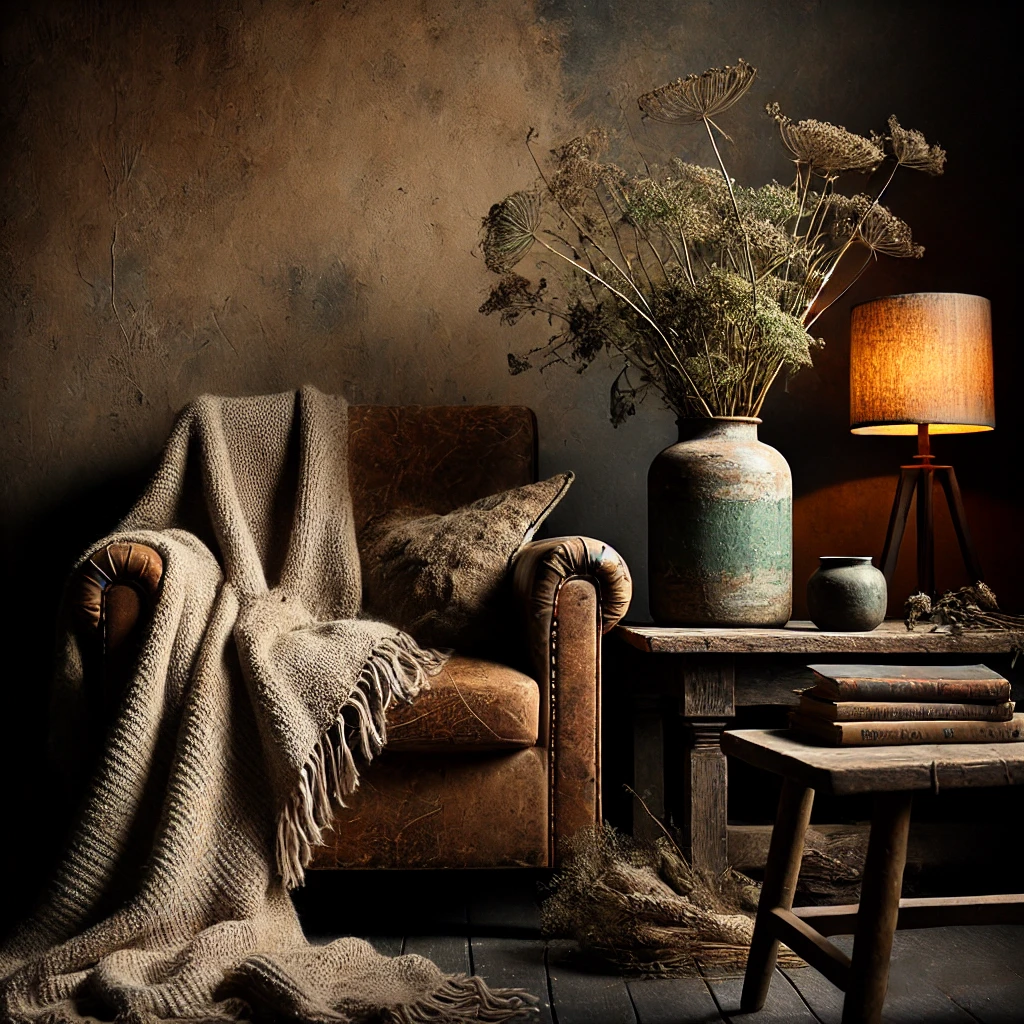
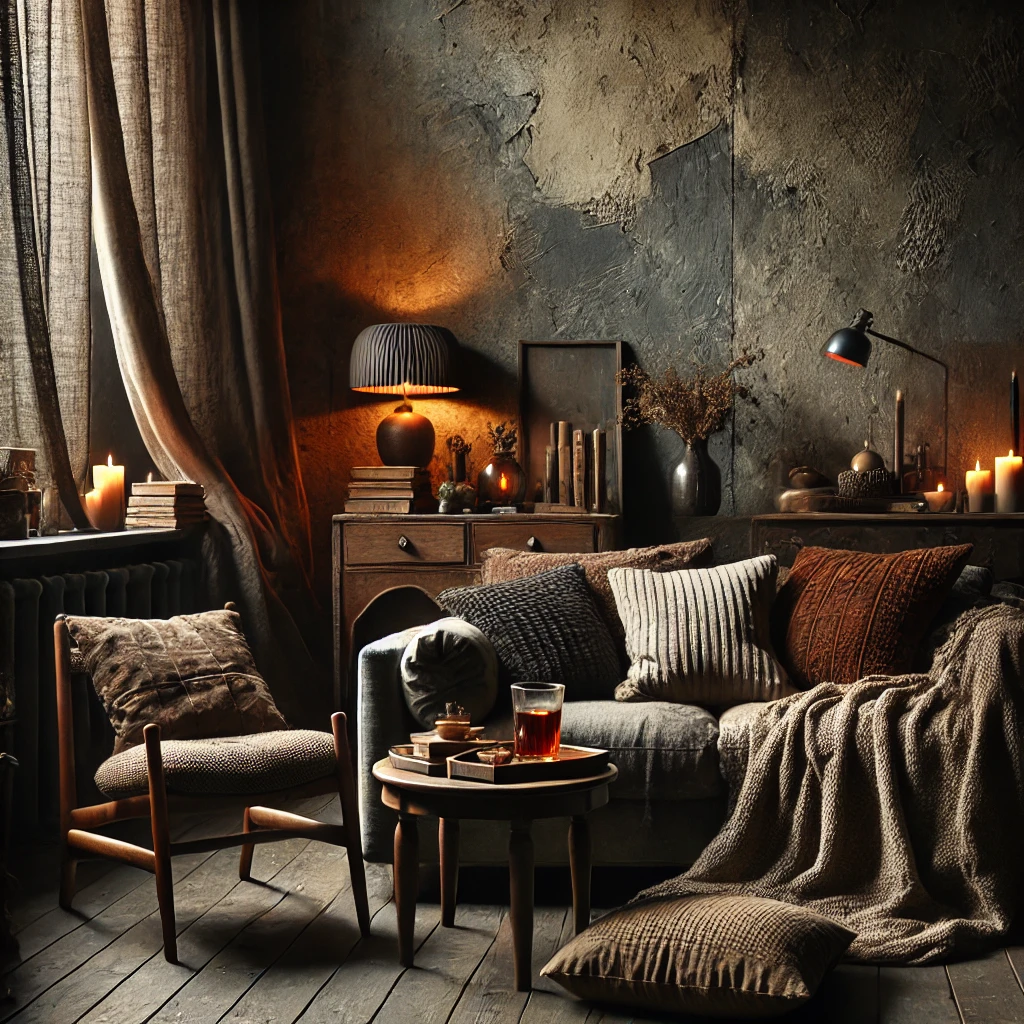
Elements of a Soulful Moody Space
Curating a moody interior requires attention to detail and a love for imperfection. Here are the essential elements:
1. Lighting: The Mood Setter
Lighting is everything in a moody space. Skip harsh overhead lights and opt for layered lighting—table lamps, wall sconces, and candles.
✨ Tip: Use dimmable lights to create different moods throughout the day.
2. Texture: The Soul of the Space
Raw materials bring depth and soul. Combine textures like rough stone, aged leather, and soft linen for a tactile experience.
✨ Tip: Mix matte and natural finishes to create visual contrast.
3. Color Palette: Beyond Just ‘Dark’
Moody does’t always mean black. Deep neutrals—charcoal, muted green, rust—add warmth and dimension without feeling heavy.
✨ Tip: Pair dark walls with lighter elements like natural wood or creamy textiles to balance the look.
4. Worn & Lived-In Aesthetic
A moody space welcomes the beauty of imperfection. Vintage pieces with a story, weathered surfaces, and handmade details are key.
✨ Tip: Incorporate flea market finds or heirloom pieces to add character.
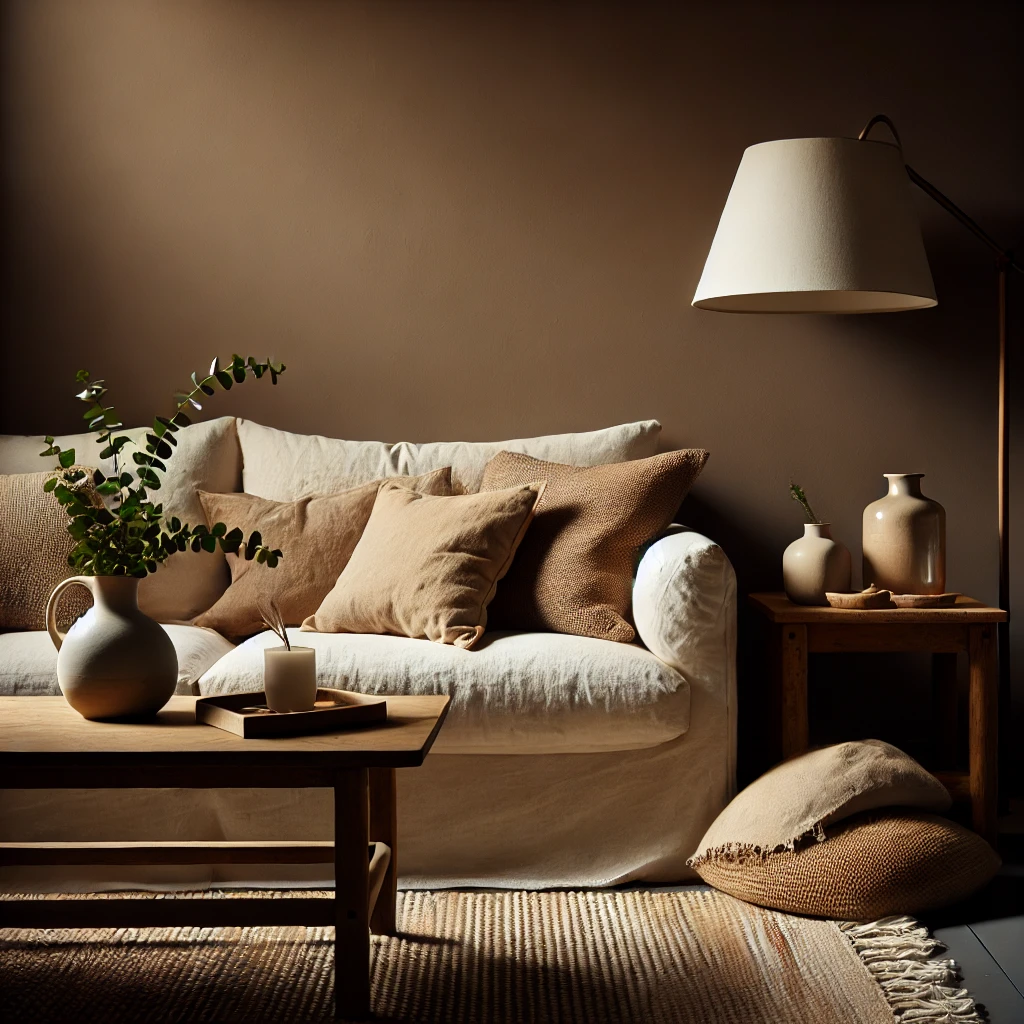
How to Curate a Moody Interior in Your Home
Here’s how to bring that soulful, moody vibe into your own space:
+ Start Small:
Add moody elements through textured throws, vintage pottery, and soft lighting.
+ Use Contrast:
Balance dark walls with natural wood and organic shapes.
+ Layer Textures:
Mix fabrics and materials—velvet cushions, raw linen curtains, and handwoven rugs.
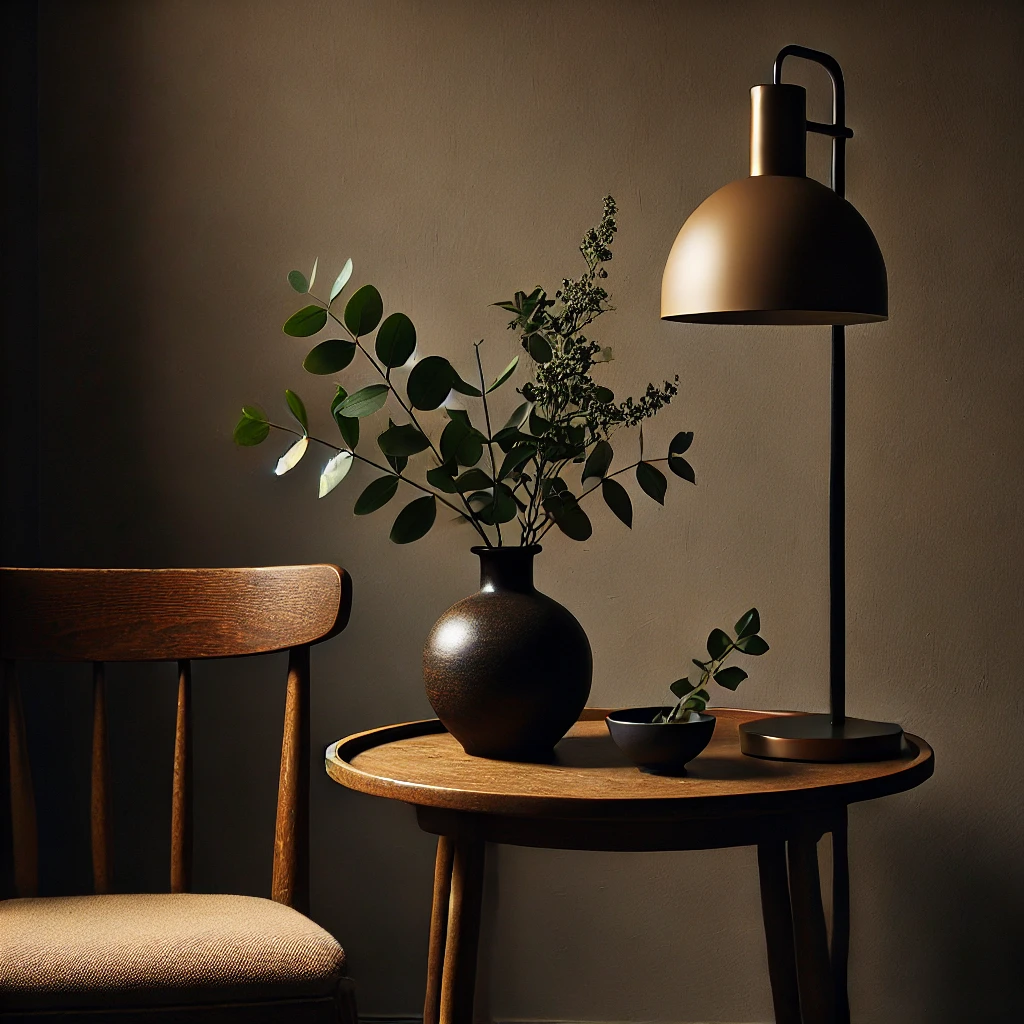
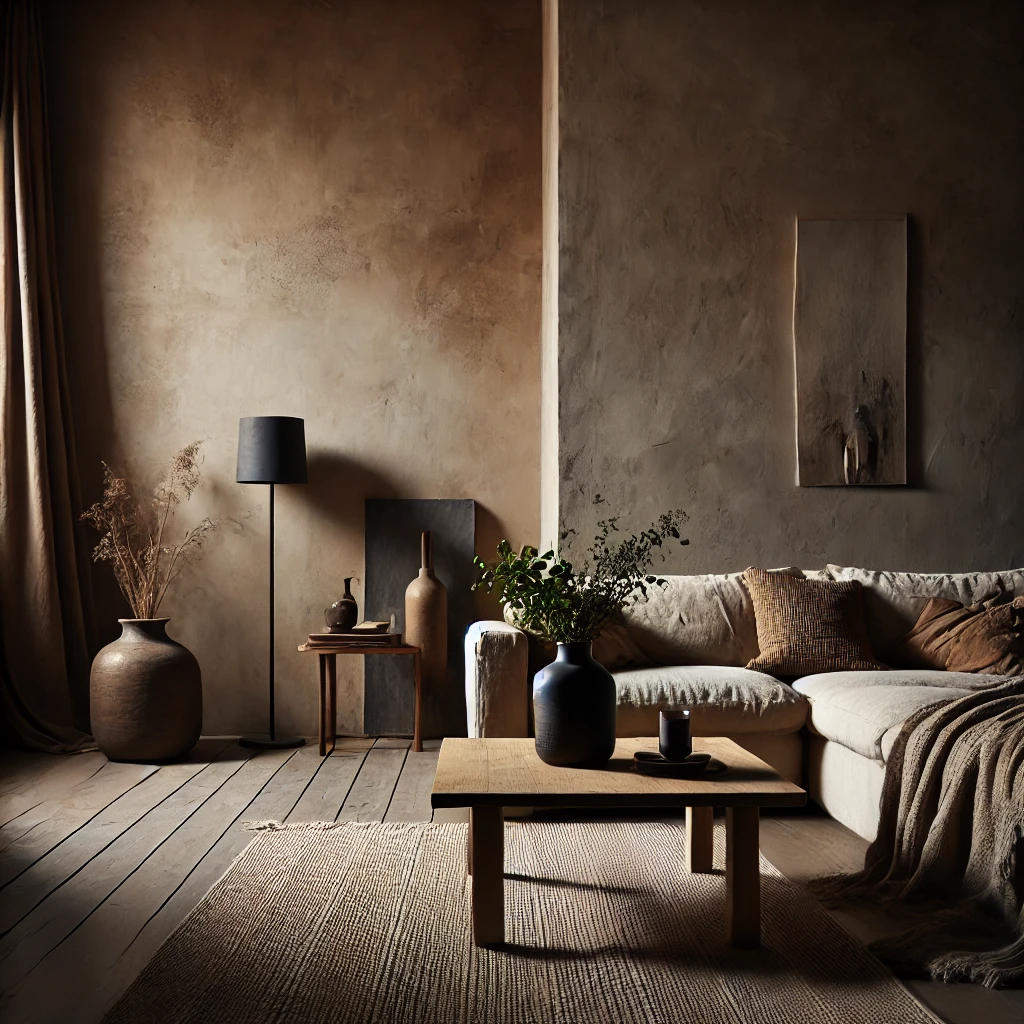
Conclusion
Curating a moody interior is about embracing depth, texture, and soul. These spaces aren’t perfect—but that’s what makes them feel alive. Whether you’re adding small touches or going all-in with deep tones, let your home tell a story.
✨ Looking for more inspiration? Explore our curated stories in The Archive for soulful design ideas.
✨ For more inspiration on creating soulful spaces, check out our guide on Wabi-Sabi Living: Creating Imperfectly Perfect Spaces.
February 8, 2025
Creating Soulful Spaces: The Moody Interior Guide
A COLLECTION OF INSPIRATION
WHERE NATURE-INSPIRED ARCHITECTURE AND DESIGN TAKE CENTER STAGE. THIS IS A SPACE FOR THOSE WHO SEEK KNOWLEDGE, RAW BEAUTY, ORGANIC MATERIALS, AND THE ART OF THE WILD AND UNPREDICTABLE. CELEBRATING CREATIVE MINDS, INNOVATIVE SPACES, AND A PASSION FOR LOVE, NATURE, AND BOUNDLESS IMAGINATION.
search the archive
Search by category
global design
Before & Beyond
sustainability
narratives in design
Design Insights
shared spaces
create & craft
Inspired Designs
the archive
The Art of Moody Interiors: How to Curate Soulful Spaces
A moody interior isn’t just about dark walls—it’s about emotion, depth, and feeling. These spaces breathe life, tell stories, and draw you in with their raw beauty. Rooted in Wabi-Sabi design principles, they celebrate natural materials and the beauty of imperfection, creating soulful spaces that feel timeless and serene. A well-curated moody space embraces imperfection, mixes textures, and plays with light and shadow.
In this guide, we’ll explore how to curate a soulful, moody interior that feels both intentional and effortlessly lived-in. Whether you’re starting from scratch or layering in details, let’s create a space that feels like art.
What Defines a Moody Interior?
A moody interior is more than dim lighting and deep color palettes. It’s a space that awakens your senses through texture, light, and authenticity.
Key Characteristics of a Moody Space:
• Layered textures—Natural materials like linen, aged wood, and stone.
• Rooted in Wabi-Sabi Design: Celebrate the beauty of imperfection with organic shapes, patina finishes, and natural aging that tells a story.
• Soft, indirect lighting—Candles, warm sconces, and table lamps.
• Muted, earthy tones—Think charcoal, rust, olive, and deep browns.
• Worn and lived-in elements—Patina finishes, vintage finds, and handcrafted details.


Elements of a Soulful Moody Space
Curating a moody interior requires attention to detail and a love for imperfection. Here are the essential elements:
1. Lighting: The Mood Setter
Lighting is everything in a moody space. Skip harsh overhead lights and opt for layered lighting—table lamps, wall sconces, and candles.
✨ Tip: Use dimmable lights to create different moods throughout the day.
2. Texture: The Soul of the Space
Raw materials bring depth and soul. Combine textures like rough stone, aged leather, and soft linen for a tactile experience.
✨ Tip: Mix matte and natural finishes to create visual contrast.
3. Color Palette: Beyond Just ‘Dark’
Moody does’t always mean black. Deep neutrals—charcoal, muted green, rust—add warmth and dimension without feeling heavy.
✨ Tip: Pair dark walls with lighter elements like natural wood or creamy textiles to balance the look.
4. Worn & Lived-In Aesthetic
A moody space welcomes the beauty of imperfection. Vintage pieces with a story, weathered surfaces, and handmade details are key.
✨ Tip: Incorporate flea market finds or heirloom pieces to add character.

How to Curate a Moody Interior in Your Home
Here’s how to bring that soulful, moody vibe into your own space:
+ Start Small:
Add moody elements through textured throws, vintage pottery, and soft lighting.
+ Use Contrast:
Balance dark walls with natural wood and organic shapes.
+ Layer Textures:
Mix fabrics and materials—velvet cushions, raw linen curtains, and handwoven rugs.


Conclusion
Curating a moody interior is about embracing depth, texture, and soul. These spaces aren’t perfect—but that’s what makes them feel alive. Whether you’re adding small touches or going all-in with deep tones, let your home tell a story.
✨ Looking for more inspiration? Explore our curated stories in The Archive for soulful design ideas.
✨ For more inspiration on creating soulful spaces, check out our guide on Wabi-Sabi Living: Creating Imperfectly Perfect Spaces.
A COLLECTION OF INSPIRATION
WHERE NATURE-INSPIRED ARCHITECTURE AND DESIGN TAKE CENTER STAGE. THIS IS A SPACE FOR THOSE WHO SEEK KNOWLEDGE, RAW BEAUTY, ORGANIC MATERIALS, AND THE ART OF THE WILD AND UNPREDICTABLE. CELEBRATING CREATIVE MINDS, INNOVATIVE SPACES, AND A PASSION FOR LOVE, NATURE, AND BOUNDLESS IMAGINATION.
Feb 8, 2025